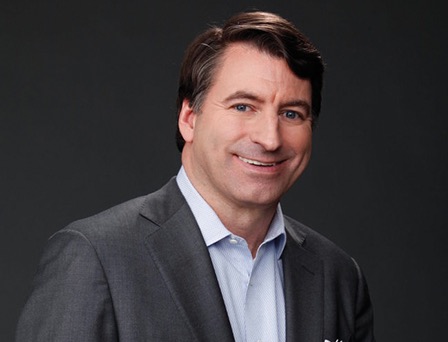Bigger Budgets Eyed For Programmatic TV

After an election-season squeeze, programmatic TV execs expect budgets will allow the accessing of more national linear TV inventory in 2017 as budgets for data-driven campaigns increase.
Programmatic—which uses data to identify specific target audiences, and automation to select and buy appropriate ad inventory—is a force in the digital world, but only slowly making inroads in the linear TV ecosystem. According to a new report by Zenith Media, a division of Publicis, programmatic advertising will grow 31% in 2017 in digital channels, faster than social media and online video, and will become the principal method of trading digital display this year, accounting for 58% of all digital expenditures in 2017.
But TV has been slower to adopt programmatic. National programmers, wary about losing control of their inventory to automation, have been testing their own programmatic offerings, and have slowly been giving independent programmatic platforms access to spots.
“Research and partnering has begun for programmatic TV and radio, with Publicis Media vetting vendors and beginning tests with specific clients. No major trading has yet been implemented on these new media platforms, however,” the Zenith report said.
Independent programmatic platforms have been able to mount national campaigns using inventory from local stations. But they say national programmers are opening the spigots.
“We’re seeing greater adoption of true programmatic in the sense of really getting datadriven [campaigns], as opposed to using it as an efficiency play,” said Chris Raleigh, chief revenue officer of Placemedia.
“We’re getting more access to inventory. I’ve got the top networks, I’ve got [multichannel video programming distributors], I’ve got syndication and local broadcast,” Raleigh said, adding that “the major networks and the agencies are really gearing up for next year’s upfront and how they’re going to extend data-driven targeting and execution.”
Broadcasting & Cable Newsletter
The smarter way to stay on top of broadcasting and cable industry. Sign up below
Post-Election Growth
Admore CEO Brendan Condon said the political season put a crimp on programmatic margins during the third quarter and October, as inventory became scarce and expensive. Even in that environment, he noted, programmatic helped uncover media that advertisers wouldn’t otherwise have looked at or had access to.
With the election over, a lot of inventory is still being used for make-goods on under-delivery for programming that aired opposite political programming. But programmatic platforms can address help by diving deeper into available inventory. “Without it, you couldn’t solve those issues and concerns for those marketers,”
Conlon said. Condon said clients are coming to Admore with seven-figure campaign budgets. “And a lot of them are episodic. They’re coming in because they want to make a big splash on a holiday event or theatrical release.”
Clients are also renewing. Even when there’s no guarantee involved, “you want to deliver in full,” Condon said. “That’s what enables you to get renewals. If they can count on you, they’ll come back.”
Admore is also offering third-party research to document the brand lift programmatic campaigns can generate.
TV in the Equation
Some of the money to buy linear TV as part of multiplatform programmatic campaigns is coming from programmatic platforms where clients want the targeting and flexibility of digital but spend the bulk of their marketing budgets on TV. Some of those digital programmatic specialists are looking to team with supply- side platforms with expertise in TV.
In November, digital giant Rubicon Project made a deal with Placemedia. “People think that TV is easy and there are lots of nuances to it,” said Placemedia’s Raleigh.
To do TV, you have to identify inventory, estimate ratings for a demographic group such as women 18-49, and estimate delivery of a target market, such as women looking to buy luxury SUVs. TV buyers are used to getting guarantees, Raleigh said. That’s been a challenge for the digital guys, and working with platforms with TV experience is a better way to go for them, he said.
“In the early days, you were seeing very small orders, and you couldn’t effectively buy national. The budgets weren’t big enough,” Raleigh said. With small budgets, a single spot on a major network, such as USA, would absorb a big share of the dollars but leave little room for a campaign to achieve frequency. “Now we’re starting to see larger budgets come in and so now you’re actually able to use the national networks.”
Raleigh added that he’s got more than a dozen clients who come back for programmatic campaigns quarter after quarter. “It’s working for them because we’re hitting the age/gender guarantees on Nielsen, but we’re also getting the effective CPMs on the strategic targets, which to me is really the true promise of programmatic.”
Jon has been business editor of Broadcasting+Cable since 2010. He focuses on revenue-generating activities, including advertising and distribution, as well as executive intrigue and merger and acquisition activity. Just about any story is fair game, if a dollar sign can make its way into the article. Before B+C, Jon covered the industry for TVWeek, Cable World, Electronic Media, Advertising Age and The New York Post. A native New Yorker, Jon is hiding in plain sight in the suburbs of Chicago.










